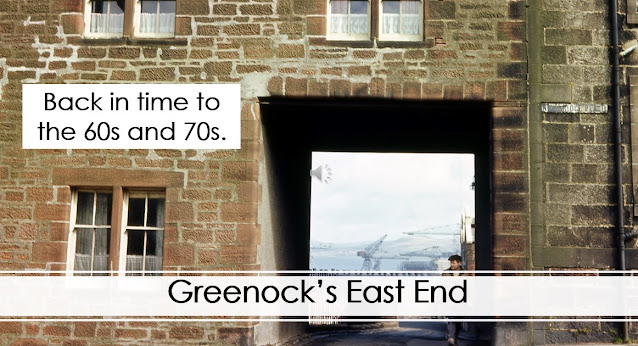This picture, part of an information board at Irvine Harbourside, shows Scots poet Robert Burns with his good friend Richard Brown (1752-1825). Burns once wrote about Brown – “He was the only man I ever saw who was a greater fool than myself when WOMAN was the presiding star;.” – not bad coming from a man who was well known as a womaniser. Burns also acknowledged that Brown encouraged him to write poetry. Brown was six years older than Burns and a seafaring man. The pair used to go for long walks in Eglinton Woods and Brown would regale Burns with tales of his adventures at sea.
.JPG) |
| Irvine Burns Club |
Captain Richard Brown married Eleanor (Helen) Blair daughter of David Blair. The couple moved to Port Glasgow from Ayrshire. Brown sailed from Port Glasgow to the West Indies for John Campbell Sen & Co of Glasgow. Robert Burns and Richard Brown corresponded over the years. While in Port Glasgow the Brown family lived at Bay Street. They had five children. They had two sons - Richard and Alexander. Richard was described as a merchant of Port Glasgow while Alexander was described as shipmaster, like his father.
Their eldest daughter, Jean Brown (1768-?) married James Cleland of Port Glasgow in 1806. The couple had at least 12 children. One of their sons, Richard Cleland became Captain of Cunard Line ships.
Their second daughter, Ann Brown (1788-1827) married Port Glasgow merchant William Hamilton (originally from Ayrshire) in 1810. William Hamilton left money in his will for a new "Free Church" in the town. It was called Hamilton Free Church in his honour and built at Princes Street (since demolished). There is still a church bearing his name in Port Glasgow - Hamilton Bardrainney Church.
Third daughter Eleonora Brown (1792-1858) married Captain Robert Gilkison of Port Glasgow. The Gilkisons were another Irvine family of seafarers. One of their sons, Robert Gilkison settled in Dunedin, New Zealand. A daughter Eleanora Blair Gilkison (1821-1868) married James Allan (from another Ayrshire family) of the Allan Line (shipping). Many of the Gilkison family are buried in the crypt of Port Glasgow Parish Church.
Through Richard Browns's daughters it is possible to see just how closely these Ayrshire families who moved to Port Glasgow were linked through marriage. Almost all of them were connected with ships and trade. Some remained in Port Glasgow, but many travelled far and wide, settling all over Britain and abroad. Richard Brown's grandchildren were always reminded of their links with Robert Burns as this extract shows.
Richard Brown was an early member of Greenock Burns Club.




.JPG)

.JPG)


.JPG)





%20(2).JPG)





.JPG)
.JPG)
.JPG)
.JPG)
.JPG)








